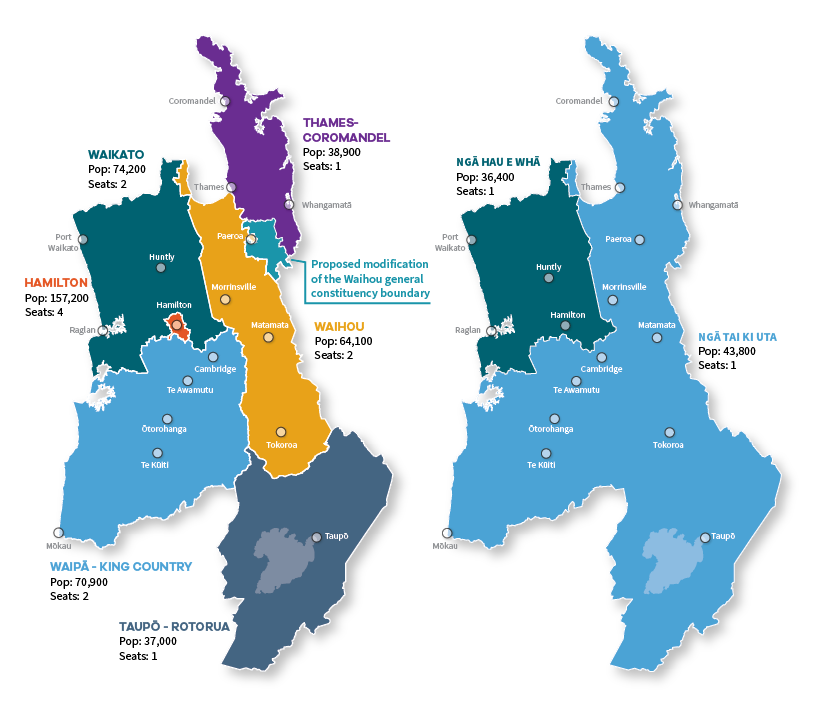Constituencies
View our consitutency maps and boundaries. Enter a property address into our interactive mapping tool and find out what constituency the property is in, or you can look at the maps at the bottom of this page.
Note: These maps were last updated in March 2024.
Enter your address, and view your property
To use the mapping tool
- click the drop-down arrow to expand the Constituencies list in the right hand menu
- deselect (un-tick) the constituency type option that doesn't apply (either General or Māori).
- click the drop-down arrow to expand the required constituency type, and view its boundary colours
- enter your address in the Search for address field (top left of screen).
- The map will then show your property in the correctly coloured location.
- You can zoom in and out of the map, using the + and - buttons, and move around using the arrow buttons or by click and dragging the map.
Representation review
The council must conduct a representation review no later than 2024, and any changes made will take effect for the 2025 triennial elections. This review is crucial to ensure compliance with the Local Electoral Act 2001 (LEA) and the principles outlined in the Local Government Act 2002 (LGA).
In this review, the council must consider several key factors, including fair representation, effective representation, and communities of interest. Currently, our representation arrangements consist of 14 councillors, with six general constituencies and two Māori constituencies. In August 2023, the Council reaffirmed its commitment to retaining Māori constituencies for electoral processes.
However, when the latest population statistics are applied, we've found that the Waihou general constituency doesn't comply with the fair representation rule of +/- 10%. This means we need to explore options to ensure fair and effective representation for all residents. To do this, we'll be considering factors such as population data, demographic trends, and projected population growth.
Over the coming months, the Council will propose a preferred arrangement, invite public submissions, and hold hearings to gather feedback from the community. Based on this input, a final proposed representation arrangement will be made.





To ask for help or report a problem, contact us
Tell us how we can improve the information on this page. (optional)